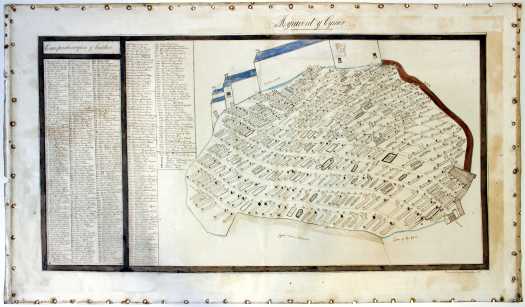The Rhondda Relief Road, which runs from Trehafod to Pontygwaith via Porth, opened to traffic in 2006 and was officially opened the following year – after landscaping work was completed – by the First Minister for Wales Rhodri Morgan. Although the need to divert traffic away from homes in the Porth area had long been acknowledged the scheme was not without controversy. At a cost of £98 million it is one of the most expensive roads ever constructed in the UK, working out at £18 million per mile. However, much of the controversy surrounded the route of the road and the fact that it would pass through the historic graveyard of Cymer Independent Chapel. This would require the exhumation of over eight hundred bodies.
The present Cymer Independent Chapel was built in 1834 to replace, improve and expand upon the previous chapel of 1743. It was founded by Reverend Henry Davies, famed for his evangelical zeal and and is recognised as the first non-conformist chapel to be built in the Rhondda. It would be a further hundred years before a second Independent chapel would be built in the Rhondda, at Carmel, Treherbert, in 1857.
The chapel’s congregation grew and flourished as the population of the Rhondda expanded. However, when Mid Glamorgan Council conducted their chapel survey in 1978 – the records of which also reside with Glamorgan Archives (ref.: MGCC/CS/54/10) – the congregation was documented as shrinking and as such were no longer able to obtain the services of a full time minister. The chapel eventually closed its doors permanently in 1987.
In 2005 surviving records of the chapel were deposited at Glamorgan Archives (ref: D342). The collection includes financial records for the chapel, cemetery accounts and a quantity of photographs. Included in the cemetery accounts is a hand drawn plan of the graveyard, produced in 1877.

The plan seeks to recreate the graveyard, with each individual grave carefully hand drawn in great detail.

Each grave is numbered and adjacent to the drawing is a key listing the purchaser of each plot. Among the carefully recreated graves can be found the resting place of the founding minister Reverend Henry Davies, buried in a simple grave in the shadow of the chapel he helped build.
Later in 2005 the bodies buried at the Chapel graveyard were exhumed and re-interred in a portion of remaining land unaffected by the road. Some were moved to different graveyards at the request of surviving relatives. The 1877 hand drawn plan of the graveyard is our best representation of the chapel graveyard as it existed, now lost under the tarmac of the A4233.
